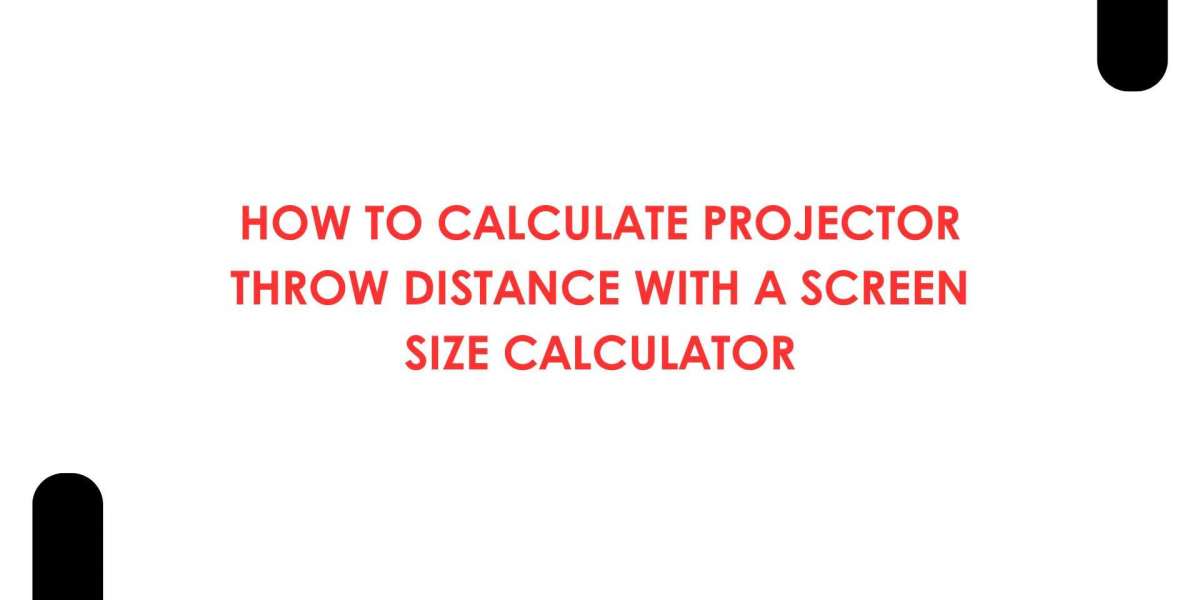In business settings, the screen you choose for presentations can make or break your message. A display that is too small may leave the audience squinting to read data, while a screen that is too large might feel overwhelming in a compact meeting room. The goal is to create a setup where every attendee can clearly see and engage with the content, no matter where they are seated. This is where a screen size calculator becomes an invaluable tool. It takes the guesswork out of sizing by using precise measurements and viewing guidelines to help you find the perfect fit.
In this blog, we will walk you through a step-by-step approach to selecting the ideal screen size for business presentations, whether you are setting up a conference room, training space, or boardroom.
Step 1: Understand the Role of Screen Size in Presentations
The right screen size is critical for business presentations because it affects both clarity and engagement. A well-sized display ensures text is readable, charts are legible, and visuals appear sharp from any seat in the room. It also prevents distractions caused by attendees adjusting their position to see better.
In addition, presentations often include small text or detailed visuals, so selecting a size that meets recommended viewing angles is important. This is where careful calculation—not guesswork—becomes essential.
Step 2: Measure the Room and Viewing Distances
Before making any decisions, measure your presentation space. Record:
The distance from the screen to the farthest seat.
The distance from the screen to the closest seat.
The total width and height of the wall where the screen will be mounted or placed.
These measurements are the foundation for determining screen size. A screen size calculator will use them to suggest dimensions that ensure visibility for everyone in the room.
Step 3: Follow Industry Viewing Standards
Industry guidelines, such as those from the Audio Visual and Integrated Experience Association (AVIXA), recommend that the screen height should be at least 1/6 of the distance to the farthest viewer for presentations with detailed content. For example:
If the farthest viewer is 30 feet away, the screen height should be about 5 feet.
The width will depend on the aspect ratio, commonly 16:9 for modern displays.
By applying these standards, you can ensure your audience sees your content clearly without strain.
Step 4: Choose the Right Aspect Ratio
Most business presentations today use a 16:9 aspect ratio, which works well for PowerPoint slides, videos, and web content. However, if you frequently present large spreadsheets or data-heavy visuals, an ultra-wide aspect ratio may be better.
A screen size calculator allows you to select the aspect ratio before generating results, ensuring the recommendations match your presentation format.
Step 5: Factor in Resolution and Content Type
Resolution plays a major role in determining how large you can go without losing clarity. A 4K display can handle a larger size while keeping text sharp, whereas a 1080p display might need to be slightly smaller for the same level of detail.
The type of content you present also matters.
Text-heavy slides: Prioritize clarity and readability.
Image-heavy slides: Focus on size and visual impact.
Videos: Choose a balance between immersion and detail.
Step 6: Consider Lighting Conditions
Business presentation spaces often have ambient lighting, whether from windows or ceiling lights. A larger screen might seem like the best choice, but without sufficient brightness, the image could appear washed out. Choosing the right size in combination with a high-brightness display or projector ensures visibility even in bright rooms.
A screen size calculator helps ensure that your size choice matches your display capabilities and environment.
Step 7: Plan for Seating Layout
The layout of your room affects how your audience interacts with the screen.
Classroom layout: Focus on central visibility with minimal side viewing angles.
U-shape or boardroom layout: Consider wider viewing angles and adjust screen placement.
Theater layout: A larger size with proper elevation may be necessary.
By considering seating positions, you can select a size that offers the best viewing experience for all participants.
Step 8: Use a Screen Size Calculator for Accuracy
With your room measurements, seating layout, resolution preferences, and content type in mind, use a screen size calculator to get a precise recommendation. Enter:
Farthest and closest viewing distances.
Aspect ratio.
Resolution.
The calculator will generate the optimal screen height and width, helping you choose a display that matches your exact needs.
Step 9: Test Before Finalizing
If possible, test the recommended size before purchasing. You can project sample slides onto the wall at the suggested dimensions to see how they look from different seating positions. This step ensures that the content remains readable and visually appealing in real conditions.
Step 10: Think About Future Needs
When investing in a screen for business presentations, consider your future plans. If you expect to host larger groups or present in bigger spaces, you may want to select a size that can scale to those needs. This future-proofing approach saves time and money down the road.
Final Thoughts
Selecting the perfect screen size for business presentations is about more than picking the biggest display you can fit in the room. It is about creating a balance between clarity, comfort, and engagement for your audience. By measuring your space, applying industry guidelines, and using a screen size calculator, you can make a data-driven choice that delivers professional results.
With XTEN-AV and the right planning tools, you can ensure every presentation looks sharp, communicates effectively, and keeps your audience focused on your message—not struggling to see it.
Read more: https://audiovisual.hashnode.dev/choosing-the-right-projector-screen-size-for-your-setup








